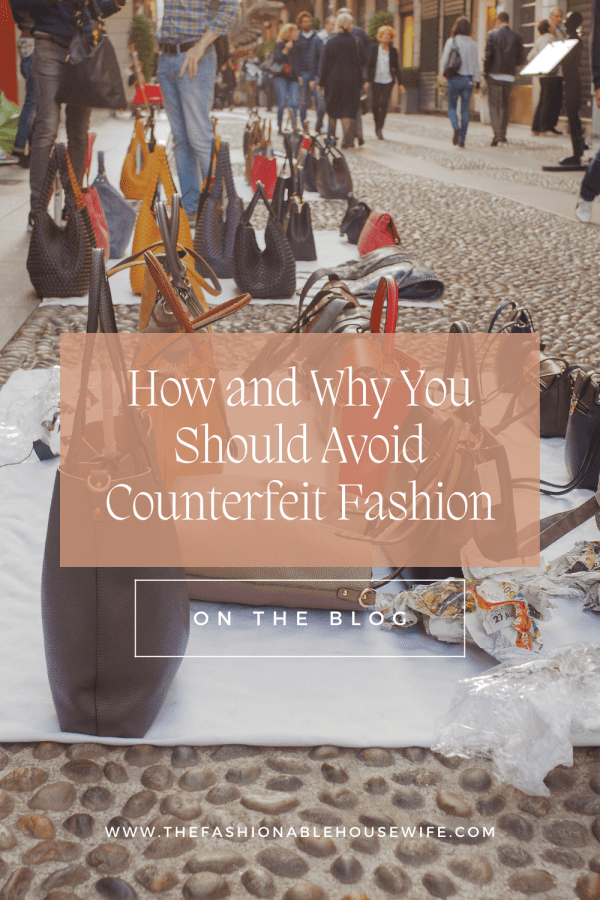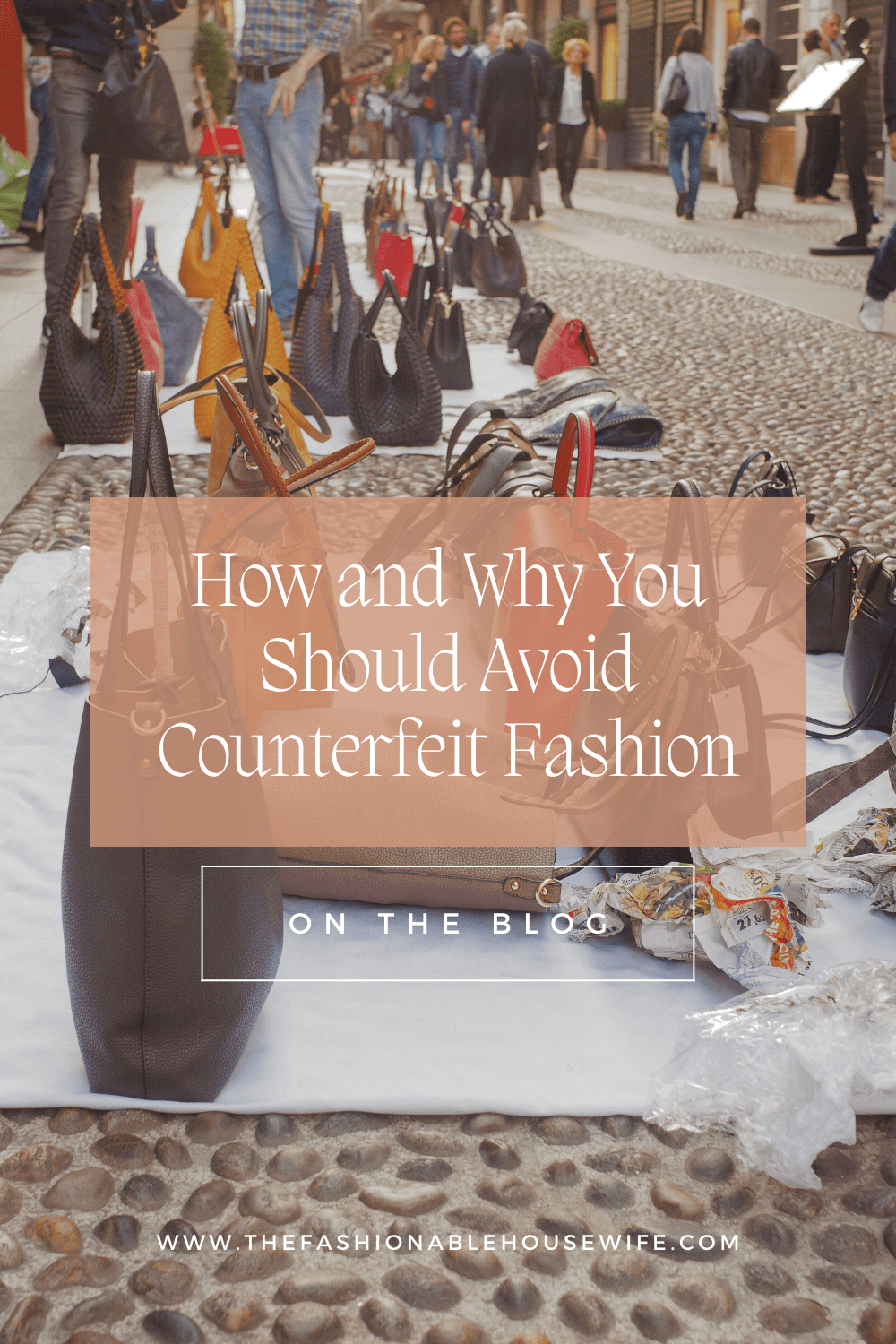How and Why You Should Avoid Counterfeit Fashion

While some argue that look-alike designer items make luxury more affordable and accessible, these items come at a high cost, not just to the environment, but to those involved in producing them. Counterfeit products bought for personal use are not considered illegal, however doing so often promotes criminal activities such as child labor and human trafficking.
While authentic luxury items are made with durability in mind, designer “dupes” can negatively impact the environment, as they tend to be manufactured using poor quality materials, contributing to pollution and adding to unnecessary textile waste once the item is no longer fit for use.
How to Spot Dupes
To the untrained eye, fake designer goods may look like the real thing – only to turn out to be poor quality later on. Fortunately, there are third-party websites where experienced authenticators can help you to spot fake Gucci, Fendi and other designer items.
There are also tips you can use to help you to spot faux designer items yourself and avoid the pitfalls of being deceived by designer duplicates. This guide covers what to look for whether you are shopping in-store or online.
In-Person
Perfume, luggage, accessories, clothes and shoes are all examples of fake luxury products. These tend to be sold at flea markets or from street vendors and may even find their way into thrift stores and vintage boutiques.
While photographs from online third-party stores may be unreliable (and may even be stock images lifted from the actual designer’s website), Handling an item allows you to check the fine details up-close. These include:
- Serial dates, codes, labels and other information including third-party authentication
- Labels and directions for washing that are inconsistent, generic, or poorly-translated.
- Fonts and proper spelling of branding on labels packaging or on branded clothing.
- Logos (even slight differences like shape, size or positioning can be a giveaway).
- Poor construction or uneven stitching.
- Zippers (some brands may use ABS zips on their garments, while others use YKK zips).
- Poor quality buckles or other hardware.
- Unusual colors or shapes that differ from the designer’s typical products
- Smell: Unpleasant, chemical smells can also be a sign that the item may be an imitation product made using cheap materials.
Another important tip is to be assertive and listen to your instincts. Don’t be afraid to ask the seller for proof of authenticity (such as certificates or photographs of labels). If they attempt to use pushy sales tactics or if something doesn’t feel right, it’s ok to walk away.
Online
In the past, it was relatively easy for private vendors to sell poor-quality fake designer goods to consumers online, although in recent years online marketplaces like eBay and Etsy have taken steps to prevent this from happening.
Buying online can be a little more challenging as you are not able to see the item for yourself – but if you are in any doubts, ask the seller for additional photographs and any proof of authenticity they may have, including certificate, codes and close-ups of the labels.
Finally, check the URL: a misspelled website address could indicate a scam website that may be harmful to your device. To avoid downloading any malware, (or inadvertently purchasing poor quality goods), the best course of action here is to get antiviral software from a reputable company.
This doesn’t apply to just fashion either. There are large number of mom and pop shops that are being ripped off by Chinese companies that create replicas of toys, home goods, and more to make a quick profit. This practice is harmful to both our economy and the environment.
Don’t complain about the price of groceries and then buy dupes. You are contributing to the problem.

